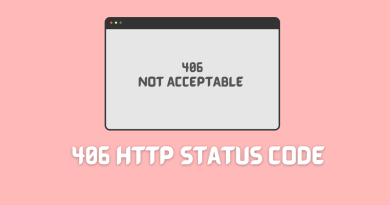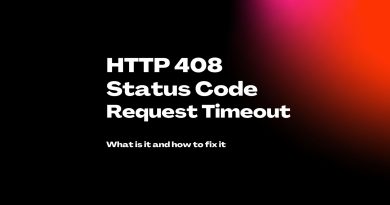What is Rate Limit?
If you’ve ever used a website or app that required you to sign in with a username and password, then you’ve probably seen a message telling you that your account has been temporarily locked because of too many failed login attempts. This is an example of rate limiting, which is a technique that web developers can use to protect their websites and apps from attack. In this post, we’ll explain what rate limiting is and how it works. We’ll also talk about the different methods that can be used to achieve rate limiting, and the benefits of using this technique.
Rate limit definition
Rate limiting is the process of restricting the number of incoming requests that a user can make to an API or website in a given period of time. For example, if a rate limited to 100 requests per minute, then a user will only be able to make 100 requests in that minute. If they try to make further requests, they will receive an error message telling them that they have exceeded the limit.
The purpose of rate limiting is to prevent users from making subsequent requests in a short period of time, which can overload the web server and cause the site or app to crash. Rate limiting can also be used to protect against bot attacks, such as Denial of Service (DoS) attacks, which are designed to overwhelm a server with requests and cause it to fail.
What are the types of rate limiting?
There are three main types that can use a rate limiting algorithm to achieve rate limiting:
User rate limiting
User rate limiting is a user level type of rate limiting that specifically restricts the number of requests a user can make within a given period of time. This is usually done in order to prevent a single user from overloading the system with too many requests, which can cause performance issues for other users. User rate limiting can be implemented in a number of ways, such as by IP address, by user ID, or by cookie. In some cases, user rate limits may be applied on per service request basis, meaning that a user would be limited in the number of service requests they could make to each individual service. User rate limits are commonly used on websites and web applications, as well as on APIs.
Server rate limiting
Server rate limiting is a server level type of rate limiting that is used to control the amount of traffic that a server can handle. This is done by limiting the number of requests that a server can process in a given period of time. This type of rate limiting is often used to prevent server overload, and to ensure that server resources are not overwhelmed. Server rate limiting can also be used to improve server performance by ensuring that only the most essential requests are processed. In addition, server rate limiting can help to protect server security by preventing malicious traffic from overwhelming the server.
Geographic rate limiting:
Geographic rate limiting is a type of rate limiting that is based on the location of a user. It is typically used to control access to resources that are located in a specific geographic area, such as a country or region. For example, a company may use geographic rate limiting to restrict access to its website from users outside of the United States. Geographic rate limiting can also be used to control the distribution of content. For example, a content provider may use geographic rate limiting to ensure that only users in certain countries can access its content. Geographic rate limiting is often used in conjunction with other types of rate limiting, such as IP address-based rate limiting.
Rate Limiting Methods
There are several methods that can be used to implement rate limiting. The most common methods are:
- IP address-based rate limiting is the most basic form of rate limiting. It works by restricting the number of requests that can be made from a single IP address in a given period of time. This type of rate limiting is often used to prevent DoS attacks, as well as to limit the amount of traffic that a server can handle.
- User ID-based rate limiting is similar to IP address-based rate limiting, but it uses user IDs instead of IP addresses.
- Cookie-based rate limiting is a more sophisticated form of rate limiting that uses cookies to track the number of requests that a user has made.
- URL path-based rate limiting is a more sophisticated form of rate limiting that uses the URL path of a request to determine how to rate limit it. This type of rate limiting is often used to prevent a single user from making too many requests to a specific URL path and causing the system to become overloaded.
How Rate Limiting Works in APIs
One of the most common places that you’ll see rate limits is API rate limiting. Let’s say your API has a rate limit of 10 API requests per second. This means that if more than 10 API calls are made to your API within a one-second timeframe, those additional requests will be rejected until the next second begins. Once the second begins, another 10 requests can be processed, and so on. Often times, there will be a grace period built into the rate limit so that bursty traffic doesn’t result in all of your requests being rejected; for example, our 10 requests per second limit might actually allow for up to 20 requests in any given second, but only if there were no more than 10 requests in the previous second. This grace period ensures that occasional bursts of traffic don’t cause problems for your API.
How Rate Limiting Works User Logins
User login rate limiting is a type of rate limiting that is designed to protect against brute force attacks. A brute force attack is a type of attack that guesses multiple username and password combinations in an attempt to gain access to an account. User login rate limits are used to prevent these types of attacks by limiting the number of failed login attempts that can be made in a given period of time. For example, a user login rate limit might allow for 5 failed login attempts in a 1-minute timeframe. After the 5th failed attempt, any additional attempts made within that minute would be rejected. This type of rate limit is often used in conjunction with other security measures, such as CAPTCHA, to further protect against brute force attacks.
What Kind of Bot Attacks are Stopped by Rate Limit
There are many different types of bot attacks, but not all of them are stopped by rate limits. For example, a distributed denial-of-service (DDoS) attack is a type of attack that is designed to overwhelm a server with traffic in an attempt to take it offline. A DDoS attack is not stopped by rate limits because the attacker is not trying to make multiple requests to the server; instead, they are trying to send a single API request that is too large for the server to handle. However, there are other types of bot attacks, such as brute force attacks, that can be stopped by rate limits.
As you can see, rate limits are a useful tool for controlling access to resources and protecting servers from malicious traffic. However, it’s important to understand how they work and what they can and cannot do in order to use them effectively.
Components of a Rate Limiting rule
There are three components to define rate limits:
- The limit: This is the maximum number of requests that a user can make in a given period of time.
- The period: This is the length of time over which the limit applies. For example, a rate limit may be set to 100 requests per minute, or 300 requests per hour.
- The action: This is the response that will be given to a user who exceeds the limit. For example, they may receive an error message, or their account may be temporarily locked.
Benefits of Rate Limiting
Rate limiting can have a number of benefits, including:
- Increased security: Rate limiting can help to protect your website or app from attack by bots or malicious users.
- Improved performance: By preventing users from making too many requests in a short period of time, rate limiting can help to improve the performance of your site or app.
- Reduced costs: By preventing malicious users from making excessive amounts of requests, rate limiting can help to reduce the amount of bandwidth and server resources that are used.



